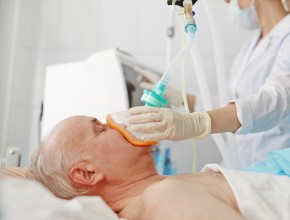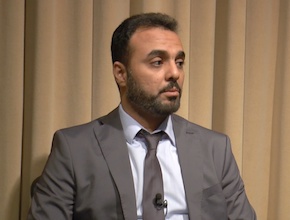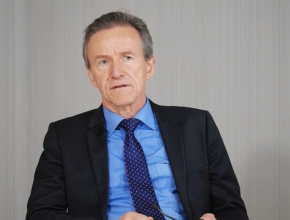Sodium bicarbonate in severe acute metabolic acidosis associated with decreased mortality
The use of sodium bicarbonate infusions in patients with severe acute metabolic acidosis in the intensive care unit (ICU) was associated with decreased mortality.
The study included close to 400 patients aged ≥18 years admitted to the ICU within the previous 48 hours with severe metabolic acidosis (pH ≤7.20, PaCO2 ≤45 mm Hg, sodium bicarbonate ≤20 mmol/L) and either with severe illness (Sequential Organ Failure Assessment [SOFA] scores ≥4) or an arterial lactate concentration ≥2 mmol/L. They were randomly assigned to groups receiving no sodium bicarbonate (the control group) or intravenous sodium bicarbonate infusions (the bicarbonate group). The average baseline results among the patients were a pH of 7.15 in both groups, PaCO2 of 37 mm Hg in the control group and 38 mm Hg in the bicarbonate group, and a serum lactate level of 5.3 mmol/L in the control group and 6.3 mmol/L in the bicarbonate group. Over 50% of patients presented with septic shock, about 20% with hemorrhagic shock, and about 10% were after a cardiac arrest.
The intervention consisted of 500 mmol of sodium bicarbonate diluted to 1000 cm3 of fluid and given in boluses of 125 to 250 mL over 30 minutes with the goal of achieving a pH of 7.30. Each infusion was followed by pH measurement after 1 to 4 hours. The maximum dose of sodium bicarbonate over 24 hours was 500 mmol.
The rate of 28-day mortality was 54% in the control group and 45% in the bicarbonate group (results still consistent with chance; P = 0.07). Renal replacement therapy (RRT) was used in 52% versus 35% of patients, respectively.
Among patients with acute kidney injury (serum creatinine increase >2-3 times from baseline or urine output <0.5 mL/kg/h for 12 hours), mortality by day 28 was 63% in the control group versus 46% in the bicarbonate group, and RRT during their ICU stay was used in 73% versus 51% of patients, respectively (both results not consistent with chance; P <0.05).
The authors conclude that this first-of-its-kind study in critically ill patients with severe acidemia suggests a benefit of using sodium bicarbonate in such scenarios.
Bezafibrate beneficial in PBC
Carey EJ. Progress in Primary Biliary Cholangitis. N Engl J Med. 2018 Jun 7;378(23):2234-2235. doi: 10.1056/NEJMe1804945. PubMed PMID: 29874531.
Bezafibrate is likely beneficial in patients with primary biliary cholangitis (PBC).
This study involved 100 patients, over 90% of whom were white women, who continued to have clinical and biochemical symptoms of PBC despite receiving first-line treatment with ursodeoxycholic acid. The patients were treated with 400 mg of bezafibrate daily or with placebo, in addition to continued therapy with ursodeoxycholic acid.
A complete biochemical response, with normalization of bilirubin, alkaline phosphatase, aminotransferases, albumin, and prothrombin time, occurred in 31% of patients treated with bezafibrate versus 0% of patients treated with placebo. Changes in pruritus and fatigue paralleled the biochemical improvement.
The authors conclude that among patients with PBC who have an inadequate response to ursodeoxycholic acid, the addition of bezafibrate proves beneficial.
Type 2 diabetes: Different hemoglobin A1c targets
Abbasi J. For Patients With Type 2 Diabetes, What's the Best Target Hemoglobin A1C? JAMA. 2018 Jun 19;319(23):2367-2369. doi: 10.1001/jama.2018.5420. PubMed PMID: 29847622.
Physicians treating patients with type 2 diabetes mellitus face the challenge of reconciling recommendations from different medical bodies. A recently published guidance statement from the American College of Physicians (ACP) adds to this challenge, as it is clearly different from the recommendations issued by other medical organizations.
The updated ACP statement includes recommendations to personalize treatment goals following a discussion of benefits and harms of pharmacotherapy with the patient that addresses the patient’s values and preferences, treatment burden, and costs of care, as well as general health and life expectancy.
As a general guidance, the authors recommend glycated hemoglobin (HbA1c) levels between 7% and 8% and deintensifying treatment if the HbA1c level is <6.5%. These targets are higher than those recommended by other organizations, allowing for less stringent glycemic control.
The ACP also recommends treatment directed at avoiding symptoms of hyperglycemia or hypoglycemia rather than at reaching a specific HbA1c target among vulnerable groups. These populations include patients with severe chronic conditions (kidney disease, severe chronic obstructive pulmonary disease, or congestive heart failure), those with a life expectancy <10 years due to advanced age (≥80 years), those residing in nursing homes, and those with chronic conditions (such as dementia or cancer).
In the accompanying commentary from the Journal of the American Medical Association, the author points out that the updated ACP recommendations have generated considerable controversy and juxtaposes them with other guidelines issued by professional medical societies in the United States, with the American Diabetes Association recommending HbA1c targets <7% and the American Association of Clinical Endocrinologists advising HbA1c ≤6.5%.
 English
English
 Español
Español
 українська
українська









